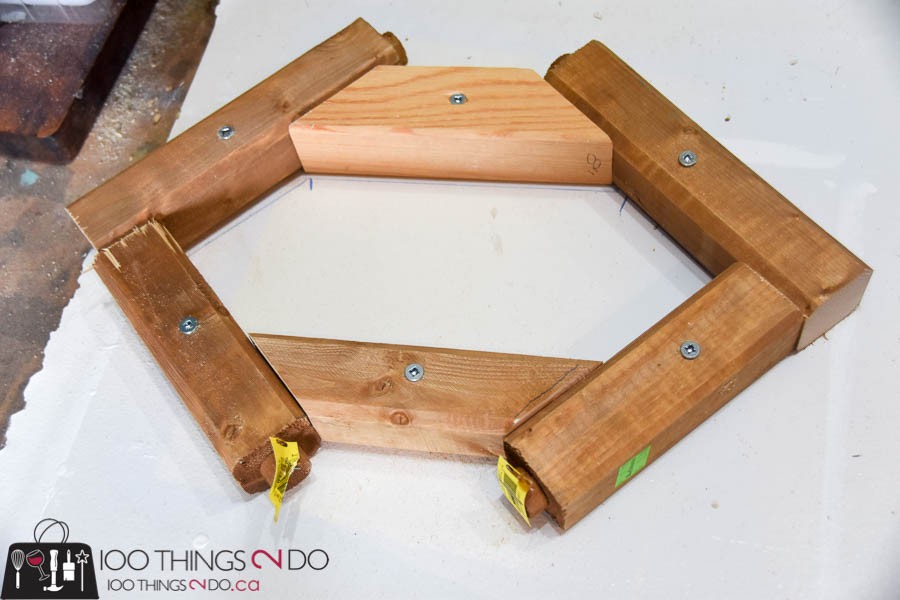Saying goodbye to a beloved pet is one of the hardest experiences for any pet owner. The silence they leave behind is deafening, and the absence of their playful antics creates a void in our homes and hearts. After the immediate grief, many pet parents seek ways to honor their companions and create a lasting memorial. If you’re looking for a personal and meaningful way to remember your furry, feathered, or scaled friend, crafting a DIY pet grave marker is a beautiful project. This guide will walk you through creating a simple yet durable concrete pet grave marker, allowing you to create a special place of remembrance in your garden or backyard.
Honoring Your Pet with a DIY Grave Marker
For many of us, pets are family. Creating a grave marker is a tangible way to express our love and keep their memory alive. Beyond the emotional aspect, a marker serves a practical purpose, especially if you’ve chosen to bury your pet in your yard. It helps designate their resting place, preventing accidental disturbance and creating a dedicated space for reflection and remembrance. This DIY project is not only budget-friendly but also allows for a personal touch, making the memorial even more special.
Materials You’ll Need
Before we begin, gather these simple materials. Most can be found at your local hardware or craft store:
- Cement Mix: A small bag of quick-setting concrete mix is ideal for this project.
- Water: For mixing with the concrete.
- Mixing Container and Tools: A bucket or tub for mixing, and a trowel or sturdy stick to stir.
- Mold Material: Scrap wood, sturdy cardboard, or even a cake pan can work. For this guide, we’ll use wood for a unique shape.
- Tin Foil or Plastic Sheeting: To line the mold and prevent concrete from sticking.
- Cardboard Letters or Stencils: For personalizing the marker with your pet’s name.
- Sandpaper (150 grit): To smooth the finished marker.
- Paint or Stain (Optional): To highlight lettering or decorate the marker.
- Epoxy Resin or Concrete Sealer (Optional): To protect the marker and lettering from weather.
- Screws and Scrap Wood (If making a wooden mold): To assemble the mold.
- Safety Gloves and Mask: To protect your hands and lungs when working with concrete.
Step-by-Step Guide: Crafting a Concrete Pet Grave Marker
Let’s get started on creating your pet’s memorial marker.
1. Prepare the Mold
First, we need to create a mold to shape our concrete. If you’re using a cake pan, you can skip this step. For a custom shape, like the one described, use scrap wood.
Cut pieces of wood to your desired dimensions. The example uses a slightly rectangular shape, but you can customize this to a square, oval, or any shape that feels right for your pet. Screw the wood pieces together onto a base piece of scrap wood to create a tight, enclosed frame. This will be the outer edge of your grave marker.
Line the inside of your wooden mold (or cake pan) with tin foil or plastic sheeting. This prevents the concrete from sticking to the mold and makes removal much easier later on. Ensure the lining is smooth to avoid unwanted textures on your marker, though some wrinkles can add a rustic charm.
2. Mixing and Pouring the Concrete
Now it’s time to mix the concrete. Follow the instructions on your concrete mix bag for the correct water-to-mix ratio. Usually, it involves gradually adding water to the dry mix while stirring continuously until you achieve a consistency similar to thick oatmeal or peanut butter. Make sure there are no dry clumps.
Once the concrete is thoroughly mixed, carefully pour it into your prepared mold. Fill it to your desired thickness. Tap the sides of the mold gently to release any air bubbles trapped within the concrete. This will help create a stronger and smoother marker.
3. Personalizing with Lettering
Allow the concrete to set for a few hours until it’s semi-solid but still impressionable – firm enough to hold its shape, but soft enough to press letters into. This is crucial for clean lettering.
Arrange your cardboard letters or stencils to spell out your pet’s name or a short message. Carefully press them into the surface of the semi-solid concrete. Ensure they are evenly spaced and pressed to a consistent depth.
Tip from Experience: Plan your lettering layout beforehand! As the original creator learned, starting with the first letter and moving forward can lead to spacing issues. It’s helpful to lightly mark the center and edges or do a dry run to ensure everything fits nicely before pressing the letters into the concrete.
4. Demolding and Finishing Touches
Let the concrete cure completely. This usually takes 24-48 hours, depending on the concrete mix and environmental conditions. Ensure it’s fully hardened before demolding.
Once cured, carefully remove the screws from your wooden mold, if used. Gently tap the wood to loosen it from the concrete. Peel away the tin foil or plastic lining. You should now have your rough concrete grave marker.
If you used cardboard letters, carefully peel them out. Because cardboard softens when damp, they should remove relatively easily, leaving behind embossed lettering.
The concrete surface will likely be rough with some edges and foil remnants. Use sandpaper to smooth the top and sides of the marker. A random orbital sander can speed up this process, but hand sanding works just as well. Sand until you achieve your desired level of smoothness.
5. Adding Protection and Detail with Paint and Sealant
To make the lettering stand out, you can paint inside the embossed areas. Acrylic paints or concrete stains work well. Choose a color that contrasts nicely with the concrete. Carefully apply the paint with a small brush, being precise to fill only the letter indentations.
For added protection and longevity, especially if the marker will be outdoors, consider sealing it. Epoxy resin provides a durable, glossy finish and protects the paint. Concrete sealers are also available for a more matte, natural look while still offering protection from the elements. Apply the sealant according to the product instructions.
Note on Epoxy: Epoxy can darken the concrete, enhancing contrast but altering the raw concrete look. Consider this when deciding on a sealant.
Ideas to Personalize Your Pet Memorial Marker
Beyond names and dates, you can further personalize your pet grave marker:
- Paw Prints: Gently press your pet’s paw (if possible and recently passed) or a mold of a paw print into the concrete before it hardens.
- Photos: Attach a waterproof photo of your pet using epoxy or a weather-resistant adhesive after sealing the marker.
- Small Toys or Mementos: Embed small, waterproof items that remind you of your pet into the concrete as it sets.
- Engravings: Use carving tools to engrave designs or symbols into the concrete for a more rustic look.
Conclusion: A Loving Tribute
Creating a pet grave marker is a heartfelt way to honor your cherished companion. This DIY project, while simple, results in a lasting tribute that marks their special place and keeps their memory alive. Placing the finished marker in your garden becomes a peaceful spot for reflection and remembrance, a constant reminder of the unconditional love and joy your pet brought into your life. Rest in peace, sweet babies, your memory lives on.

